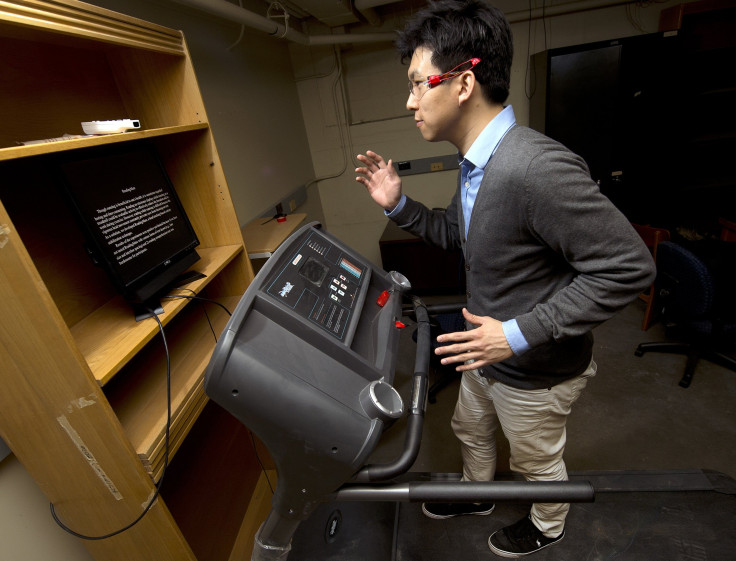Multitasking Program Lets Runners Read While Working Out

Multitasking effectively is a challenge- the more things you do at once, the less likely you are to do any one of them well. If you've ever tried reading while working out on a stationary bike or treadmill, you may have noticed such a tradeoff. Either you weren't exercising as hard as you meant to, or you couldn't focus on processing the content at hand.
A new technology makes it easier for aspiring multi-taskers to read text from a monitor while exercising on a treadmill. In a paper published last week in the journal Human Factors, assistant professor of industrial engineering Ji Soo Yi of Purdue University, doctoral candidate Bum chul Kwon, and associate professor of statistics Yu Zhu put forward a system called ReadingMate as a solution to the problem of reading while running.
"Our eyes can accommodate vibration to a certain degree," said Yi, director of Purdue's Healthcare and Information Visualization Engineering Lab (HIVE), in a statement. "There are compensatory reflex mechanisms that tend to stabilize the head and eyes to maintain gaze and head position."
When the runner's head is constantly moving, however, it's easy to get tired or dizzy while trying to focus on text. The researchers believe this is at least partially because of an increase in cognitive load, the amount of work the brain needs to do in order to process complex information.
"Not many people can run and read at the same time," said Yi. "This is because the relative location of the eyes to the text is vigorously changing, and our eyes try to constantly adjust to such changes, which is burdensome."
The ReadingMate system tracks a treadmill runner's bobbing head movements with a Nintendo Wii Remote infrared camera that captures the motion of LED lights attached to goggles the user is wearing. ReadingMate software processes the movement information with an algorithm, which adjusts the position of text on a small monitor mounted in front of the machine.
The algorithm's adjustment compensates for the head's rhythmic motion so the brain doesn't have to work as hard to do so. As a result, the text looks still from the runner's perspective and cognitive load is reduced.
In order to test the technology, the researchers recruited 15 healthy students with normal vision who ran habitually for exercise. While running on a treadmill, the participants completed a letter-counting task in which they had to count how many times the letter "F" appeared in two lines of a 10-line sentence sequence displayed on a computer monitor in front of the exercise machine. Each participant used a display with ReadingMate and a normal display during two alternate sessions, and was allowed to give up when the task became too difficult.
The results showed a significantly higher letter-counting accuracy when participants used ReadingMate, and that more of them gave up when they did not have ReadingMate, especially when font sizes were smaller and lines were closer together. In addition, participants reported seeing less blur and shaky text while using the technology, as well as more relaxed posture.
The ReadingMate system is not yet commercially available- more research needs to be done in order to streamline it as a workout aid for exercisers using treadmills, stationary bikes, and other machines. In future studies, the researchers plan to explore whether ReadingMate actually improves reading comprehension in runners.
Eventually, they hope to develop ReadingMate for real-world applications like operating heavy equipment in construction and piloting aircraft, both instances in which turbulence can make it difficult to read text on display screens.



























